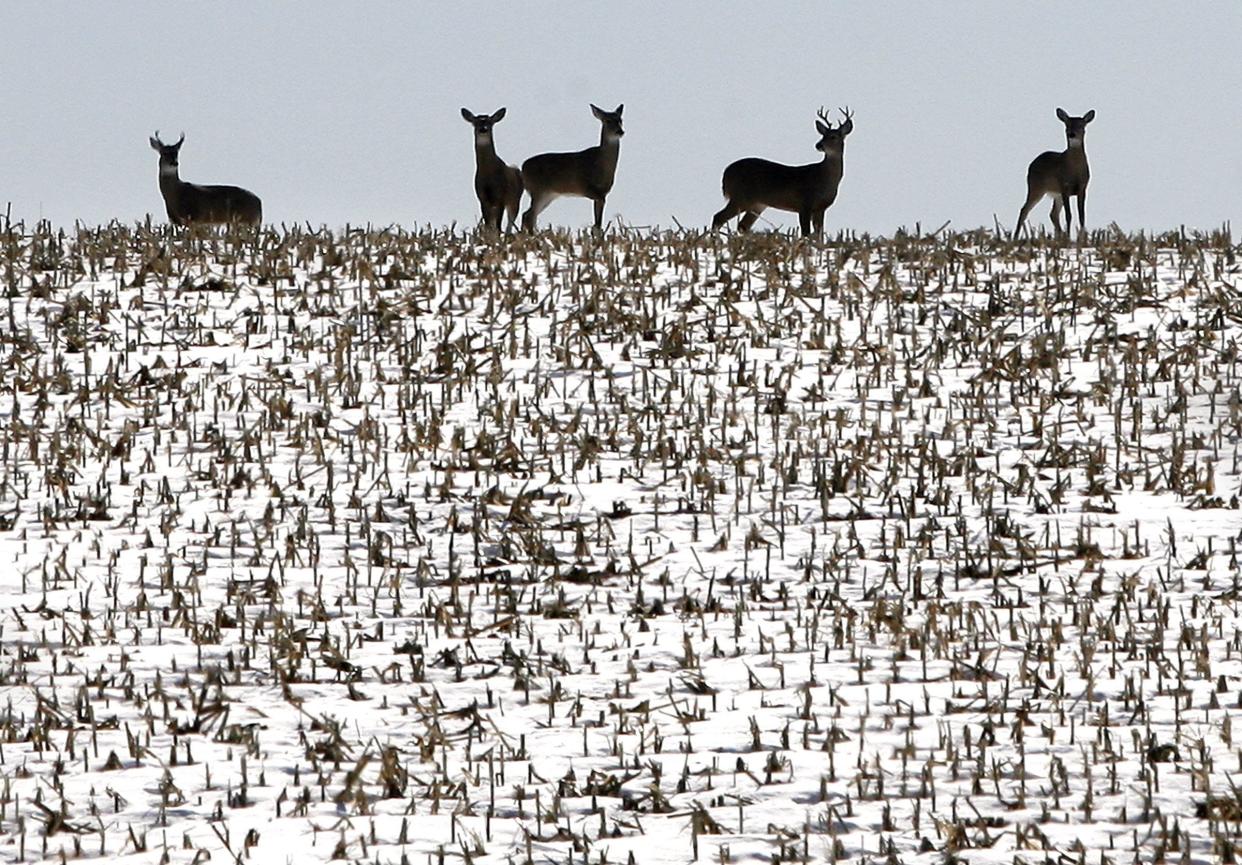Chronic wasting disease found in first central Iowa deer

For the first time, a deer with chronic wasting disease was discovered in the interior of Iowa in Greene County, far away from counties where the disease has previously been detected, according to the Iowa Department of Natural Resources.
The fatal neurological disease affects deer, elk and moose and was first found in far northeast Iowa in 2013. Since then it has been identified at the fringes of the state that border other states with the disease.
The Greene County deer was killed by a vehicle in October about five miles south of Jefferson. The DNR collects thousands of tissue samples from road-kill carcasses and from submissions by deer hunters each year. The samples are tested by the Veterinary Diagnostic Laboratory at Iowa State University.
“It’s certainly unfortunate and discouraging, but it’s something that we’re ready to respond to,” Tyler Harms, a DNR wildlife research biometrician, said of the infection in Greene County.
How the disease might have spread to the county is difficult to say. Deer often spend their lives relatively close to where they were born, but they can travel long distances. Harms said it’s also possible that someone transported an infected carcass to the county from elsewhere.
The disease is caused by an abnormal protein that damages the brains of infected animals, according to the U.S. Centers for Disease Control and Prevention. It was first identified in captive deer at a research facility in Colorado in the 1960s and spread to wild deer by 1981. It has since been discovered in more than two dozen states.
The protein is believed to transmit among deer in close proximity through saliva, feces, urine and blood. It’s unclear whether people can be infected, but there have been no known human cases. The CDC advises people not to eat the meat of an infected deer.
Iowa is a destination for whitetail deer hunters, who are estimated to spend more than $200 million annually in the state. The disease is significant for the sport because it kills deer and because state conservation officials seek to maintain smaller deer populations in areas with the disease to help control its spread.
Harms said the DNR will increase its testing of deer killed by vehicles in Greene County in the coming months to help determine the disease’s prevalence there.
“It’s probably going to be a bit of a challenge for us,” Harms said. “This is where our hunters are going to play a pivotal role, and we don’t harvest a lot of deer in Greene County relative to other counties.”
Chronic wasting disease was also detected for the first time this past year in Fremont County, in far southwest Iowa. Other counties with confirmed cases since 2013 include: Allamakee, Appanoose, Clayton, Decatur, Dubuque, Fayette, Jackson, Wayne, Winneshiek and Woodbury.
Find this story at Iowa Capital Dispatch, which is part of States Newsroom, a network of news bureaus supported by grants and a coalition of donors as a 501c(3) public charity. Iowa Capital Dispatch maintains editorial independence. Contact Editor Kathie Obradovich for questions: kobradovich@iowacapitaldispatch.com.
This article originally appeared on Des Moines Register: Chronic wasting disease found in first central Iowa deer

